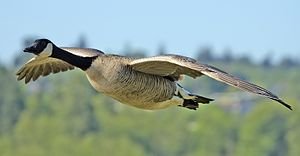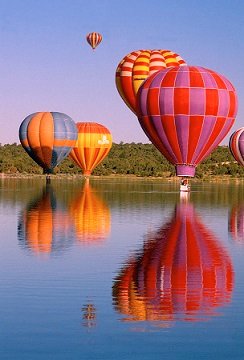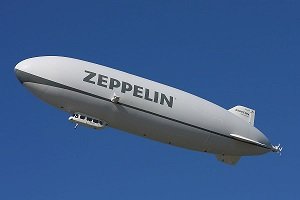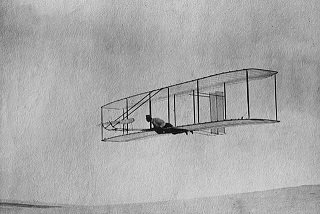How many times has this dream passed through the minds of many scientists, for example, in the Middle Ages, flying was considered a supernatural event, associated with the image of angels, demons, sorcerers, and magicians. But the dream of flying continued to animate many wise men and inventors, who began to design and build machines that allowed the human being to hold and move in the air.

The idea of
flying like birds was developed by the Renaissance artist Leonardo da Vinci, who was the first to sketch a project of a flying machine, also wrote several treatises on the flight of birds and various systems, which allowed man I could stay suspended for some time in the air.
So it was, how he managed a machine with wings large enough for the air currents to hold them, similarly has a current delta wing, with a frame of aluminum tubes.
Air transport dates back to the end of the 18th century, when balloon flights became fashionable, thanks to the Montgolfier brothers who, in 1783, succeeded in raising an unmanned balloon in a square in Paris. Then, from this relevant fact appeared other French François Pilátre de Rozier and the Marquis of Arlandes, were the first to fly for more than 20 minutes aboard a hot air balloon, reaching 1000 meters high and traveling a distance of 12 kilometers through above Paris.

Despite these successes, this means of transport had a drawback of not being able to be guided, however, this impossibility did not stop many inventors from continuing their studies to achieve the goal. In the year 1852, Henri Giffard designed a balloon filled with hydrogen that reached a speed of 8 km / h and could be guided.
But this fact was not enough for the German Ferdinand von Zeppelin, who built in 1900, the first rigid modern airship, which he received in the name of Zeppelin. This flying ingenuity was 128 meters long, it was provided with a rudder to control the flight, it moved in the air thanks to propellers and could reach a speed of 30 km / h.

Then it was perfecting the designs and is when it took place on December 17, 1903, which became the first flight of a heavier device and only until 1908 is when the Wright brothers are recognized as inventors of the airplane.

With all these achievements, they began to celebrate the first international air festivals and beat the first records of speed and height. Then came the outbreak of the First World War, which suggested the need to apply all these inventions for military purposes and governments devoted many resources to research and development of aircraft.
In the year of 1923, the aeronautical engineer and Spanish pilot Juan de la Cierva invented an apparatus that is the origin of modern helicopters. From that time until the 1930s, aviation remained a little-used medium, but after the Second World War, commercial aviation grew significantly, as well as airlines that were engaged in passenger transport. In fact, the propeller aircraft went into the background and began to use aircraft with jet engines, resulting in the 1976 date the appearance of the Concorde, a jet aircraft that could reach more than 2500 km / h speed, is Say twice the speed of sound.

Thank you that the man had the insatiable curiosity to dominate the environment that surrounded him, is that unimaginable things became possible like achieving "The Dream of Flying"
